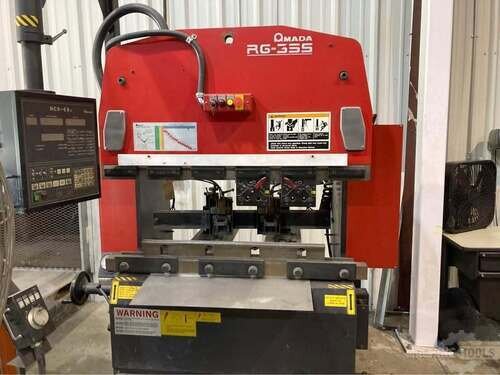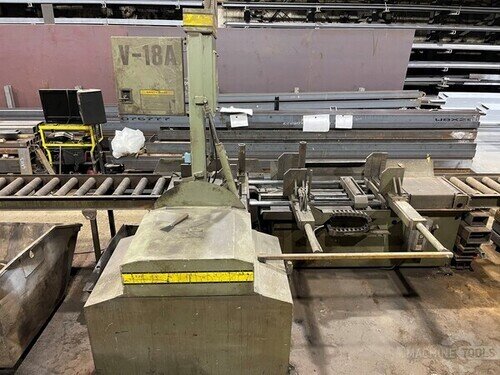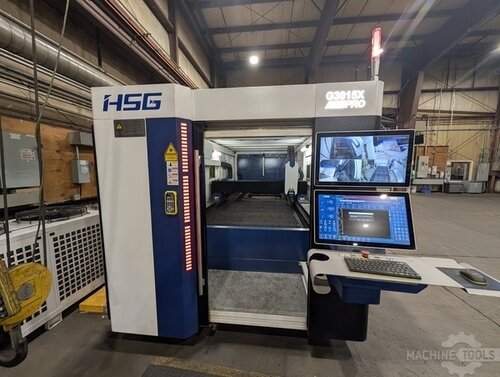When it comes to guiding clients through the process of selecting the perfect used press brake, I draw from my years of experience at Mac-Tech. My journey in automation and precision fabrication has taught me that every client has unique needs, and it’s my job to understand those needs and deliver solutions that exceed expectations. My approach is consultative, rooted in building strong relationships and ensuring customer satisfaction.
Understanding Client Needs for Optimal Solutions
Every client comes to us with a different set of challenges and goals. My first step is always to listen carefully and ask the right questions to truly understand what they need. Whether it’s enhancing production efficiency or integrating new technology into existing systems, my goal is to uncover the underlying requirements that will guide us to the best solution. This involves not just technical specifications, but also understanding the client’s business environment, budget constraints, and future growth plans.
Once I have a clear understanding of their needs, I leverage my expertise in automation and precision fabrication to recommend the most suitable used press brake options. It’s not just about selling a machine; it’s about providing a tool that will help the client achieve their business objectives. By aligning our solutions with their goals, I ensure that our recommendations are not only technically sound but also strategically beneficial.
Building Trust Through Personalized Consultations
Trust is the cornerstone of any successful client relationship, and I believe that personalized consultations are key to building that trust. I make it a point to meet with clients, either virtually or in person, to discuss their specific requirements and concerns. This face-to-face interaction allows me to demonstrate our commitment to their success and address any questions they may have.
During these consultations, I focus on being transparent and honest about what we can offer. If a used press brake isn’t the right fit, I’ll be upfront about it and explore alternative solutions. My goal is to be a trusted advisor, someone they can rely on for expert guidance and support throughout the decision-making process.
Key Questions to Identify Client-Specific Press Brakes
Identifying the right press brake for a client starts with asking the right questions. I typically begin by inquiring about the materials they work with, the types of bends they need, and the production volumes they anticipate. Understanding these factors helps narrow down the options to those that will deliver the best performance for their specific applications.
I also delve into the client’s long-term plans, such as potential expansions or shifts in production focus. This foresight allows us to recommend press brakes that not only meet current needs but also accommodate future growth. By considering both present and future requirements, we can ensure that the investment in a used press brake provides lasting value.
1990 Accurpress 7606
- Capacity: 60 T x 72″
- Weight: 6,000 lbs.
- Dimensions: 84″L x 40″W x 70″ H
- Ram stroke: 8″
1992 Accurpress 750024
Ensuring Satisfaction with Tailored Recommendations
Once we’ve identified the right press brake options, I provide detailed, tailored recommendations. This involves not only presenting the technical specifications but also explaining how each option aligns with the client’s needs and business goals. I make it a point to highlight the benefits and potential ROI, helping clients make informed decisions with confidence.
Our relationship doesn’t end with the sale. I follow up to ensure that the press brake is performing as expected and that the client is satisfied with their purchase. If any issues arise, I’m there to address them promptly, reinforcing our commitment to their success and satisfaction.
FAQ
How do you ensure the press brake meets our specific needs?
I take a consultative approach, asking detailed questions about your production requirements and future goals. This allows me to tailor recommendations to your specific needs.
What if a used press brake isn’t the right fit for us?
I prioritize honesty and transparency. If a used press brake isn’t suitable, I’ll explore other options and solutions that better meet your needs.
How does automation play a role in your recommendations?
Automation is a key component in enhancing efficiency and precision. I consider how automation can be integrated to improve your production processes and deliver better results.
Can you help with the installation and setup of the press brake?
Absolutely. We offer support throughout the installation process to ensure that your press brake is set up correctly and ready to perform.
What kind of after-sale support do you provide?
I believe in building long-term relationships, so I offer ongoing support to address any issues and ensure your continued satisfaction with your purchase.
How do you determine the ROI of a used press brake?
I help clients assess the potential ROI by considering factors like increased efficiency, reduced downtime, and the ability to take on new projects.
What if we have a limited budget?
I work with clients to find solutions that fit within their budget while still meeting their needs. There are often creative ways to maximize value without compromising on quality.
If you’re ready to explore the perfect press brake solution for your business, I’m here to guide you every step of the way. Let’s start a conversation about how we can meet your fabrication needs and support your growth.
Get Weekly Mac-Tech News & Updates








